#piazza napoleone
Text

Umberto Prencipe - Lucca, Piazza Napoleone (1918)
83 notes
·
View notes
Text

Il Bacio
Francesco Hayez, 1859, oil on canvas, Pinacoteca di Brera, Milano
He was a venician painter, in his later years he lived in Milan. Pupil of Maggiotto, he attended the Academy of Venice, completing his studies in Rome where, thanks to Antonio Canova, aimed to merge the classical canons with the colorism of the venetian tradition. After some majors works still in a classical style, he was making his way to find new contents from the new national History. After he moved in Milan he became professor at the Brera Academy. He was in contact with distinguisced academics, writers, thinkers such as Manzoni, Silvio Pellico, Berchet, Grossi and Cattaneo. He was a significan exponent of the italian romantic movement. Next to his great historical paintings, in wich he merges the concern to express with magniloquent composition of the passionate charge, he painted a great number of portraits.
If you ever get to visit Milan, at ten minutes from Piazza Duomo, there is the Pinacoteca di Brera, inside of the Accademia, after entering big wood doors and waved at the Napoleon statue, and after a flight of stairs you are inside one of the oldest (pinacoteque) in Milan. In the last room of the Pinacoteca, after having visited extremely beautifull paintings such as La cena in Emmaus By Caravaggio, Pala Montefeltro by Piero della Francesca, After the landscape of venice by Canaletto, you are welcomed into a dim lit room, with portaits hanging from the walls and in the middle Il Bacio, framed in gold foils.
The painting
The famous painting, in wich a young man embrace in a tight and passionate hug his woman, should resemble a painting from the sentimental and leterary movement popular in the XIX century. The setting is non contemporary (for the painter): the scene of the meeting is on a castle in a foyer, the costumes the two of them are wearing are not really defined, but they could be from the late middle ages. The theme seems to be love because there this intense kiss between two young people, and the woman completely loose herself in it, resembles of the dantian Francesca (inferno V) or the shakespearean Juliette.
But this painting is not resolved just with a romantic vision, this painting was finished in 1859 the year of the second independence war for italy, assumes a clearly political and patriottic meaning if saw under this light.
The man embracing his woman in this hug is one of Risorgimento volunteer, and the ardor of the kiss comes also from the distance and the risks that the war creates. The position of the leg, with the foot onto the first step, suggest this propension for action, with the man ready to flight, held only by the kiss. This interpretation, not difiicult for a contemporary spectator is backed up by different painters or writers of Hayez time.
Both vision, literary and patriottic, would not explain, unfortunately, the fortune of it, because the Bacio has become an icon of the spirit of Risorgimento. The exemplar efficacy of the painting is possible because of the formal values, starting from the essential of the rapresentation, nothing is made to focus on other details if not the linear interweaving of the two lover, and the cromatic solution: the tone, cold and precius, of the dress opposed by warm tones, in particular the red of his leggins.
The light is warm, and arrives from the top left, contributes to create soft color, and the accent of chiaroscuro accentuate the volume of the bodies.
On the bottom left we see a shadow, walking towards the lovers, it could be the authorities (he was like a partisan) after the young man, that would explain why he is ready to go, leaving behing the woman who could help slowing down the authorities.
In the early version of the painting the dress of the woman was green, in honor of the colors of the italian flag. In this version we are sure the man is a volunteer because of the feathered berret.
#il bacio#kiss#the kiss#francesco hayez#art academia#dark academia#art#art history#light academia#painting#academia#chaotic academia#classic academia#reinassance#risorgimento#italian painting#italian art
58 notes
·
View notes
Text
The most beautiful old cafes in the world


It's hard to believe, but some cafes have existed for several centuries. Just imagine that you can go for a coffee and you will be surrounded by objects that are already 200, or even 300 years old. And how many stories such establishments keep! In this article, we'll highlight 30 old retro cafes you might want to visit on your next trip.
Cafe Chris, Amsterdam
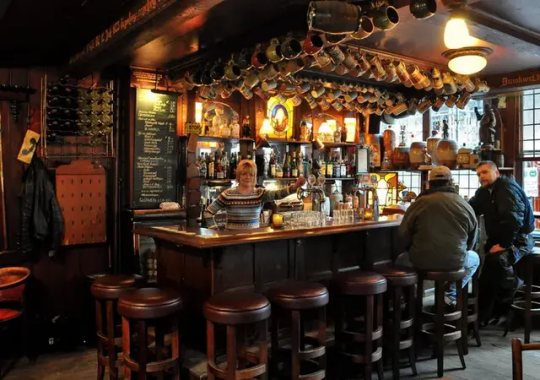
Location: Bloemstraat 42, 1015 TB Amsterdam, Netherlands
Cafe Chris is the oldest establishment in Amsterdam, founded in 1624 in the Jordaan district. Due to its dark interior, it is also called “Brown Cafe”. Once upon a time, workers who were building the Westerkerk bell tower came here for wages. The cafe still has old floorboards, backlit windows, and dark wood paneling.
Gran Caffe Quadri, Venice

Location: Piazza San Marco, 121, 30124 Venezia VE, Italy
The establishment opened its doors in 1638 - then it was called Il Rimedio. Malvasia wine was served here and was said to “invigorate the body and awaken the mind.” In 1775, merchant Giorgio Quadri and his wife Naxina, who arrived from Corfu, decided to invest in this cafe. This is how the history of Gran Caffe Quadri began. In 1830, management passed to the Vaerini brothers, who expanded the establishment by one more floor. In 2011, the Alaimo family bought the cafe. In 2018, Gran Caffe Quadri underwent a major renovation. The famous French creative and designer Philippe Starck was invited to transform it.
Cafe Procope, Paris
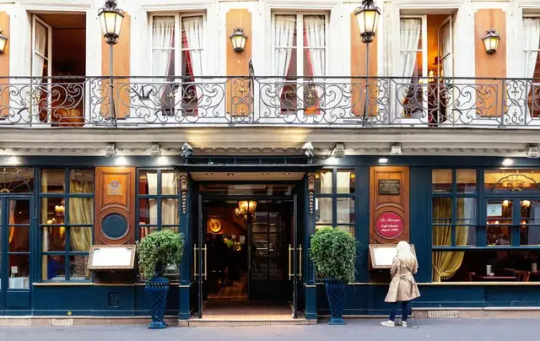
Location: 13 Rue de l'Ancienne Comédie, 75006 Paris, France
Café Procope is the first literary café in Paris. It was discovered in 1686 by Sicilian immigrant Francesco Procopio dei Coltelli - after whom it took its name. Following the traditions of the Procopio family, who ran the establishment for many years, the cafe serves sorbet and granita (crushed ice), the forerunners of ice cream. King Louis XIV appointed Café Procope as the exclusive producer of sorbets. Its famous visitors include Napoleon, Honoré de Balzac, Paul Verlaine, Victor Hugo and Voltaire.
Cafe Tomaselli, Salzburg
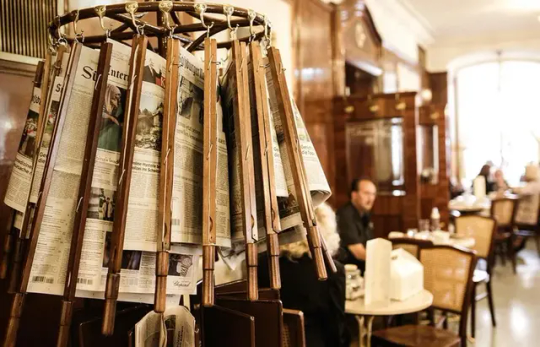
Location: Alter Markt 9, 5020 Salzburg, Austria
In the center of Salzburg, on the Alter Markt square, there is the Tomaselli cafe, perhaps one of the most famous in the world. Family-owned for centuries, this restaurant embodies stylish Austrian coffee culture. The first cafe was opened here in 1703, and in 1852 it was bought by Karl Tomaselli. Mozart and his wife Constance, playwright Hugo von Hofmannsthal, and composer Carl Weber loved to visit it.
Cafe Tomaselli recommends trying the Einspänner (double espresso with cold whipped cream) and Melange (an espresso-based coffee drink with the addition of heated and frothed milk and whipped cream).
Caffe Florian, Venice
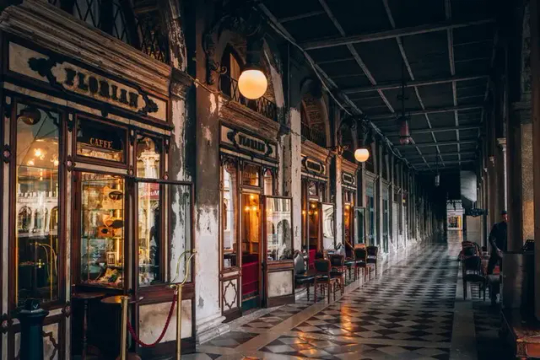
Location: Piazza San Marco, 57, 30124 Venezia VE, Italy
Caffe Florian is one of the first cafes in what is now Italy. It was opened in 1720 under the name Alla Venezia Trionfante. The establishment gained popularity due to the fact that both men and women could visit it - in those years this was very rare. Over time, the cafe began to be called Florian - in honor of the owner Floriani Francesconi. In 1760, the sales point for Venice's first newspaper, Gazzetta Veneta, was opened here.
At different times, the cafe was visited by Jean-Jacques Rousseau, Johann Goethe, Charles Dickens, George Byron, Giacomo Casanova, Ernest Hemingway and others.
Today, Caffe Florian offers more than 30 varieties of coffee drinks, many desserts, salads and light snacks.
Antico Caffe Greco, Rome
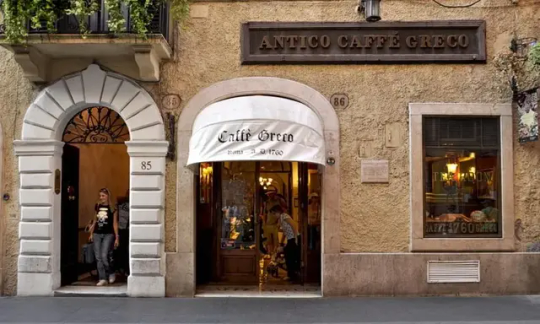
Location: Via dei Condotti, 86, 00187 Roma RM, Italy
Antico Caffè Greco is a historical café in Rome, opened in 1760. Its founder is the Greek Nicola della Maddalena. Over the centuries, the elegant Caffè Greco has been visited by Hans Christian Andersen, George Byron, Henrik Ibsen, John Keats, Mark Twain and others. Some 300 paintings, memorabilia and vintage photographs of famous clients adorn the walls of this establishment. And gilded mirrors and a piano help maintain an authentic atmosphere.
Caffè Al Bicerin, Turin
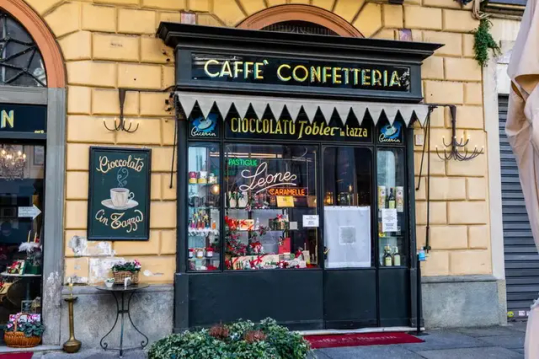
Location: Piazza della Consolata, 5, 10122 Torino TO, Italy
The history of the establishment began in 1763, when Giuseppe Dentis opened his small shop in the premises opposite the entrance to the Santuario della Consolata Cathedral. In 1856, the current building was built here according to the design of the architect Carlo Promis. And then the cafe acquired a more elegant form, which we can appreciate today - its walls were decorated with wooden panels, mirrors and lamps. It now has round white marble tables, a counter, and shelves.
This establishment was the birthplace of the famous Turin drink Bicerin - a mixture of coffee, chocolate, milk and syrup. Even Alexandre Dumas mentioned it in one of his novels.
El Fishawy, Cairo

Location: El-Gamaleya, El Gamaliya, Cairo Governorate, Egypt
El Fishawy Café is hidden in the heart of Khan Al Khalili Souk. Its doors opened to visitors in 1773. The first owner of the establishment served Turkish coffee to his friends after sunset. There were more and more people wanting to enjoy a cup of aromatic drink and discuss city news. And then the owner bought buildings nearby, added even more items and hookah to the menu. The current owners of El Fishawy, heirs of the founder, are trying to preserve the traditions and atmosphere of the establishment.
Cafe Tortoni, Buenos Aires, 1858

Location: Av. de Mayo 825, C1084 Buenos Aires, Argentina
Cafe Tortoni is considered the oldest in Argentina. It was opened by an emigrant from France in 1858 and named after the café of the same name in Paris. It is worth noting that the first premises of Cafe Tortoni were located on Avenida Rivadavia. The cafe moved to its current location in 1880. The owners have maintained the same style of the establishment throughout all the years of its existence. There is a tango room, as well as tables for playing billiards, dominoes and dice.
His most famous guests were Garcia Lorca, Jorge Luis Borges, Carlos Gardel, Hillary Clinton, Albert Einstein, Robert Duvall.
Café Gerbeaud, Budapest
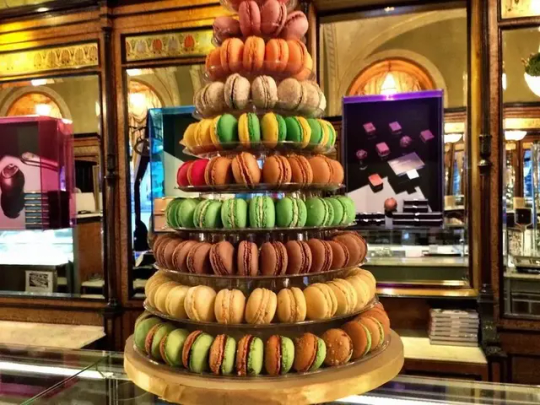
Location: Budapest, Vörösmarty tér 7-8, 1051 Hungary
Café Gerbeaud is the most famous cafe in Europe, whose history began in 1858. Its founder is Henrik Kugler, a representative of the third generation of a dynasty of confectioners. He became the first to offer customers slices of his signature Coogler cake to-go in cardboard boxes. During a visit to Paris in 1882, Henrik Kugler met Emil Gerbaud - they soon became business partners. And later, a French confectioner entrepreneur bought the cafe completely.
With the advent of Gerbeau, many changes took place in the confectionery - the menu expanded, the equipment changed, and the staff increased. Café Gerbeaud became a favorite place not only among city residents, but also among city guests, since the prices here were affordable for absolutely everyone. After Emile Gerbeau's death in 1919, his wife ran the confectionery. From 1950 to 1984 the cafe was nationalized and was called Vörösmarty. In 1995, Café Gerbeaud was bought by German entrepreneur Erwin Franz Müller. The establishment was renovated and restored to its historical appearance.
Gran Caffè Gambrinus, Naples, Italy
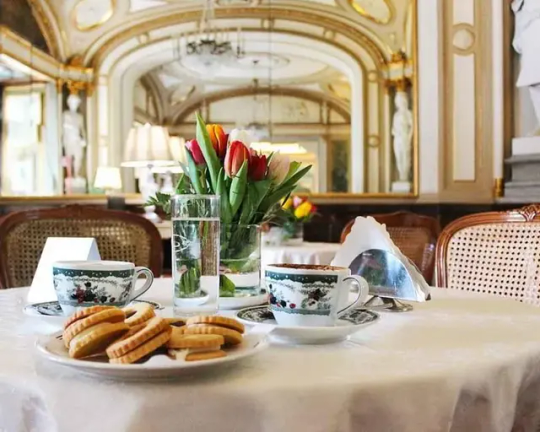
Location: Via Chiaia, 1/2, 80132 Napoli NA, Italy
The legendary coffee shop is located in the center of Naples. The establishment was founded by Vincenzo Apuzzo in 1860 - his dream was to create the best cafe in Italy. The next owner was Mario Vacca in 1889. By that time, the premises were already in need of reconstruction. The owner of the cafe invited an architect and artists who worked on updating the interior. Their paintings and sculptures adorn Caffè Gambrinus to this day.
The establishment was once visited by Matilda Serao, Ernest Hemingway, Oscar Wilde, Guy de Maupassant, Princess Sissi, and Emile Zola. By the way, the tradition of caffé sospeso was born here - paying for coffee for the next customer.
Cafe de la Paix, Paris
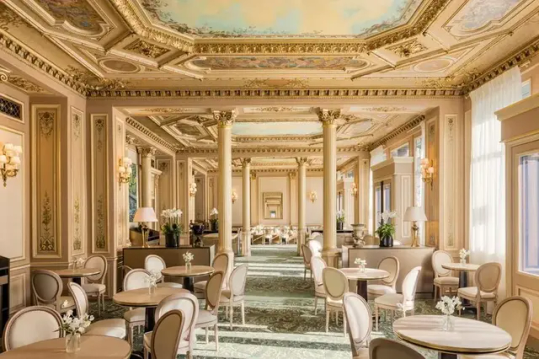
Where is it: 5 Pl. de l'Opéra, 75009 Paris, France
Café de la Paix is located in the 9th arrondissement of Paris, at the intersection of Boulevard des Capucines and Place de l'Opéra, in the building of the Le Grand Hotel. The hotel and cafe were opened in 1862 with the financial support of the Pereire brothers. The Café de la Paix gained its first international reputation in 1867, serving the International Exhibition.
The establishment, located next to the Opera Garnier, attracted many famous personalities. Pyotr Tchaikovsky, Jules Massenet, the Prince of Wales and Edward VII visited here. In 1896, Eugene Piroux held film screenings at the Café de la Paix, and later a radio studio was organized there.
Just like 150 years ago, today the restaurant is also very popular. Salads, hot dishes, snacks and desserts are served here.
Café du Monde, New Orleans
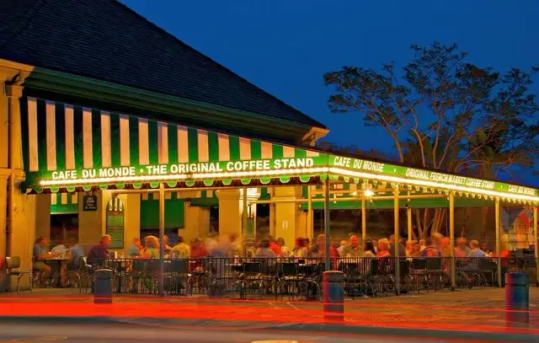
Location: 800 Decatur St, New Orleans, LA 70116, USA
Café du Monde is a true New Orleans landmark. The establishment has been in business since 1862 and always serves dark roasted chicory coffee, milk (regular or chocolate), fresh orange juice, hot chocolate and French donuts (beignets).
Cafe Landtmann, Vienna
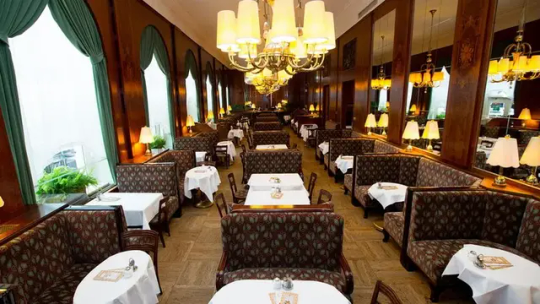
Location: Universitätsring 4, 1010 Wien, Austria
Café Landtmann is the oldest in Vienna. Guests began to be received here on October 1, 1873. Franz Landtmann dreamed of opening not just a coffee shop, but the most elegant place in Vienna. And he did everything for this - visitors were delighted with the innovative spirit of the establishment. Years passed, the owners changed, but this place was always popular among citizens and guests of the capital. In the 1970s, Cafe Landtmann was threatened with closure, but thanks to the efforts of the new owners, it was saved.
Baratti & Milano, Turin
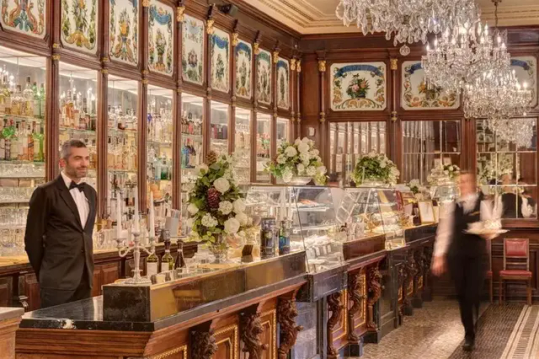
Location: Piazza Castello, 27, 10123 Torino TO, Italy
Caffè Baratti & Milano is a historic café in Turin, opened in 1875 in the central Galleria Subalpina. The establishment owes its name to two pastry chefs from Canavese: Ferdinando Baratti and Edoardo Milano. Soon after its opening, Caffè Baratti & Milano became a meeting place for the intelligentsia and the bourgeoisie. Its success has grown to the level of "official supplier of the Royal House".
The current appearance of the restaurant is the result of reconstruction in 1909. The room has a lot of marble, bronze, stucco, gilding and wide mirrors, which give this place a rich artistic appearance. The cafe was damaged during the Second World War, but was restored in 1948.
Caffè Baratti & Milano offers its visitors more than 20 types of coffee drinks, tea, light snacks, pastries and sweets.
Cafe Central, Vienna

Location: Herrengasse 14, 1010 Wien, Austria
The Central coffee shop is the most popular place in Vienna and is included in all must-see lists in this city. There are always long queues here - people come here to drink delicious coffee, eat strudel, listen to live music and just enjoy the atmosphere.
Cafe Central was founded by the Pakhi brothers in 1876. Over time, the establishment became a popular place where cultural representatives loved to come. His regular guests were Egon Friedel, Peter Altenberg, Adolf Loos, Alfred Adler, Leon Trotsky and others.
After World War II, Cafe Central closed. In 1975, the Ferstel Palace, where the establishment was located, was completely renovated. After this, the cafe reopened its doors to visitors.
Cafe Sacher Wien, Vienna
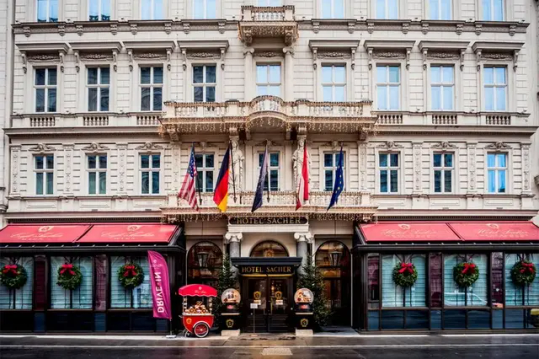
Location: Philharmoniker Str. 4, 1010 Wien, Austria
Another must-visit place in Vienna is the famous Sacher Wien café. After all, this is where they serve Sachertorte, made according to the classic recipe. In 1876, the Sacher family opened a hotel next to the Vienna Opera, which operated a café. It became a place where it was customary to have dinner before attending the opera - writers, artists and high-ranking officials met here.
Today, Cafe Sacher Wien is still very popular, as evidenced by the long queues.
Les Deux Magots, Paris
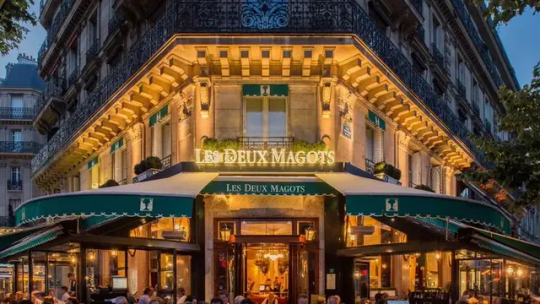
Where is it: 6 Pl. Saint-Germain des Pres, 75006 Paris, France
Les Deux Magots is a famous Parisian cafe located in the luxurious Saint-Germain-des-Prés quarter. It opened its doors to visitors in 1884. Originally a novelty store was located here, later coffee liqueurs were sold on this site. By 1914, the company was on the verge of bankruptcy, and was bought by Auguste Boulet for his cafe. His heirs still manage the establishment to this day.
Since then, Les Deux Magots has played an important role in the cultural life of the capital - writers, poets, artists and other intellectuals gathered here. Among the guests in the cafe one could meet Pablo Picasso, Bertolt Brecht, Albert Camus. The establishment has been described more than once in literary works and shown in films.
Cafe de Flore, Paris
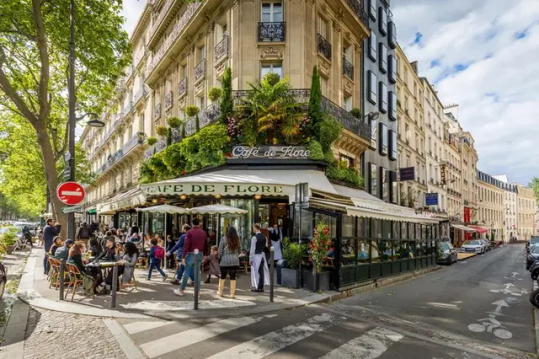
Location: 172 Bd Saint-Germain, 75006 Paris, France
Cafe de Flore was opened in 1887 in the 6th arrondissement of Paris, on the corner of Boulevard Saint-Germain and Rue Saint-Benoît. The interior of the establishment, in the classic Art Deco style, has remained virtually unchanged since World War II. Since its opening, intellectual audiences have met here. Among the famous guests at Cafe de Flore were Robert Desnos, Pablo Picasso, Georges Bataille. By the way, Charles Maurras wrote his book Au signe de Flore while sitting on the first floor of the cafe.
The restaurant's menu includes breakfasts, salads, cheeses, hot dishes, drinks and desserts.
Cafe Comercial, Madrid

Location: Glorieta de Bilbao, 7, 28004 Madrid, Spain
Café Comercial is located in the Glorieta de Bilbao square. It was founded by Antonio Gomez Fernandez in 1887.
Read the full article
2 notes
·
View notes
Text




The Winged Lion of Venice
The Lion of Venice is an ancient bronze winged lion sculpture in the Piazza San Marco of Venice, Italy, which came to symbolize the city – as well as one of its patron saints, St Mark – after its arrival there in the 12th century.
The Lion sculpture has had a very long and obscure history, probably starting its existence as a winged lion-griffin statue on a monument to the god Sandon at Tarsus in Cilicia about 300 BC. The figure, which stands on the eastern column, at some point came to represent the Lion of Saint Mark, traditional symbol of Saint Mark the evangelist.
The Lion, in its present form, is a composite of different pieces of bronze created at very different times, building upon ancient "core" components. It has undergone extensive restoration and repair work at various times.
Scientific and art historical studies in the 1980s led to the conclusion that it was created between the end of the 4th and the beginning of the 3rd centuries BC somewhere in the Hellenistic Greek or Oriental Greek world. The original bronze figure, taken as a whole, was likely significantly different from the Lion of today; and, predating Christianity, would not have originally had any association with Saint Mark.
It was looted by Napoleon in 1797 and taken to Paris where it adorned a fountain. After his death, however, it was returned to Venice in 1816, where it has been standing in its old location ever since.
78 notes
·
View notes
Text
Napoli
Napels is die derde grootste stad in Italië naas Rome en Milan. Dis vuil en skoon en besig en raserig en oud en verrassend en Maradona bedonderd.
Die stad is glo die geboorteplek van die pizza. Plat stukke brood, met 'n bolaag van enige soort kos, is aan die arm mense uitgedeel teen 'n minimale koste. 'n Bakker, Raffaele Esposito, het die arm-offerdis verander deur net kaas, kruie en tamatie te gebruik, die wêreld se eerste Margherita pizza.
Napels loop, soos oral hier, oor van geskiedenis. Daar is twee koninklike paleise, drie groot kastele, menigte ruïnes oral in die stad en 'n oorlading van kerke. (Wat my dwars in die krop steek is die feit dat geboue nie net langs die kerke gebou is nie, maar behoorlik vas aan die buitemure daarvan). Daar is hope museums, markte, ondergrondse grafte, 'n operahuis, monumente en menigte ou straatjies in die 'Centro Storico'. Die hoofstraat van 'Centro Storico' bestaan uit n hele paar strate wat dit 2 km lank maak. Die straat deel die ou gebied in twee. Om dit maklik te maak is diè elle lang straat Spaccanapoli genoem.
Die groot plein hieronder was aanvanklik aan Napoleon opgedra, maar die politiek het gedurende die bou daarvan so verander dat die planne verander is en dit Piazza del Plebiscito genoem is, te doen met Napels se inskakeling by die Koninkryk van Italië.
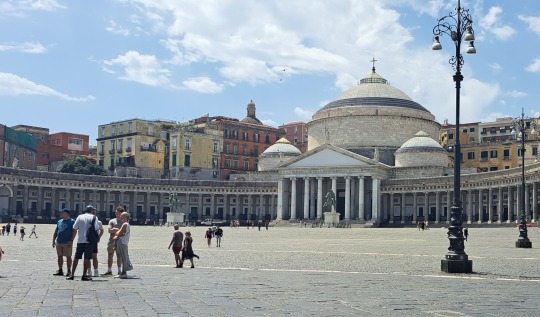
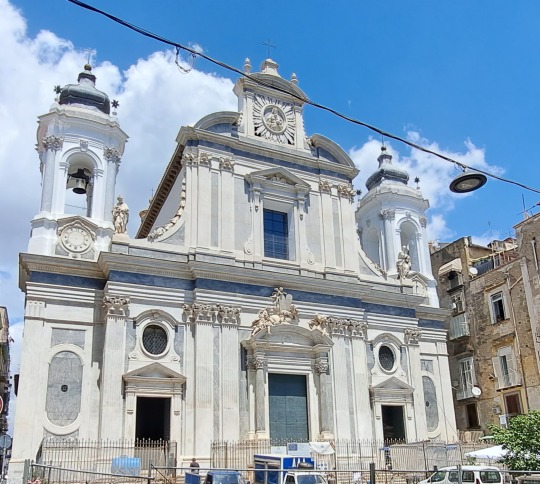
Onder een van die kerke is n ou mark ontdek wat skynbaar deur 'n grondskuiwing begrawe was. Die nageslag het dit nie van waarde geskat en die kerk bo-op gebou.
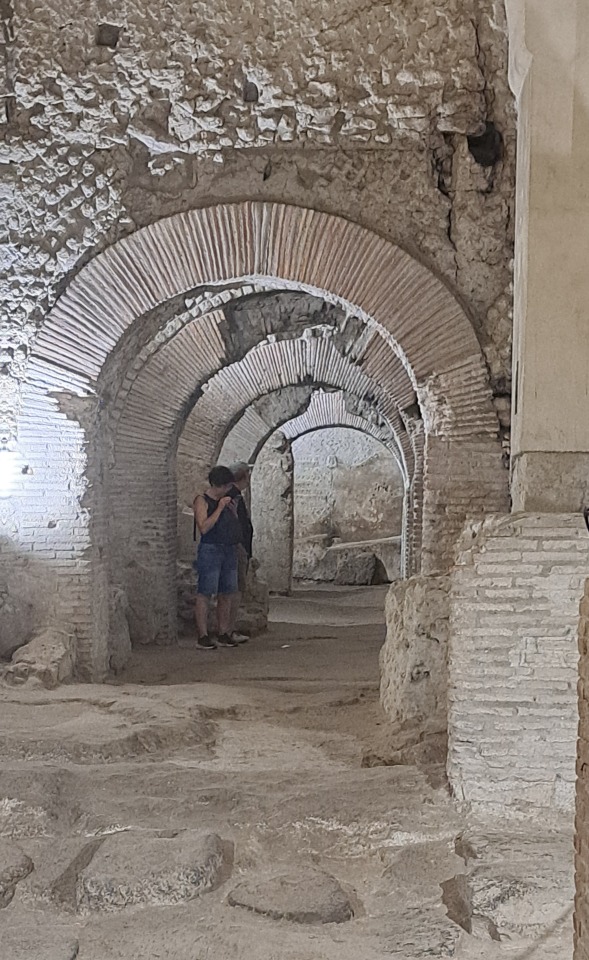
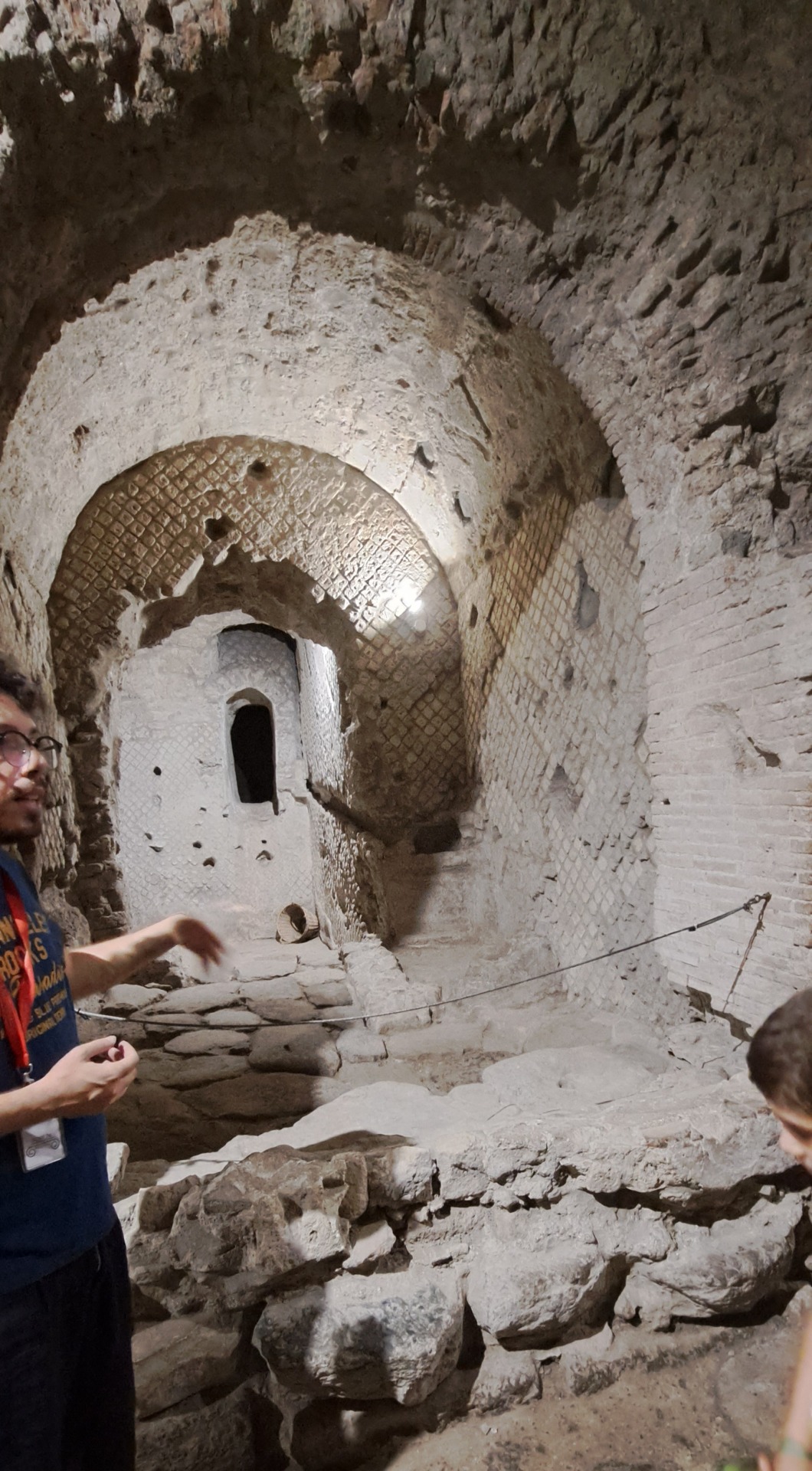
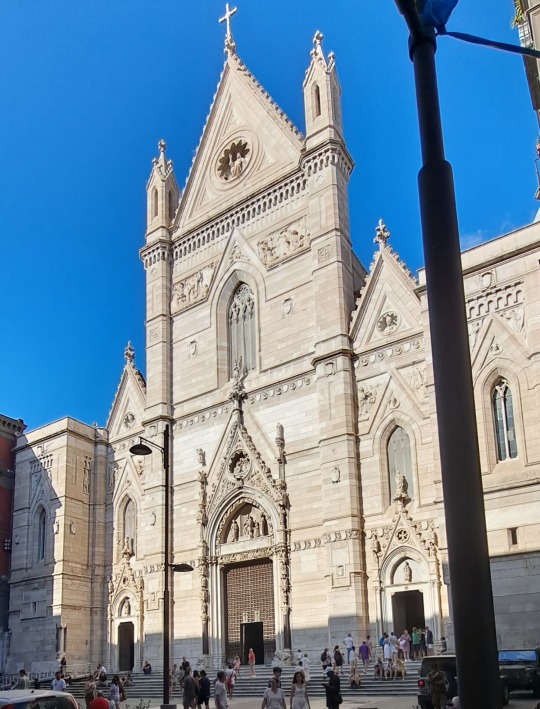
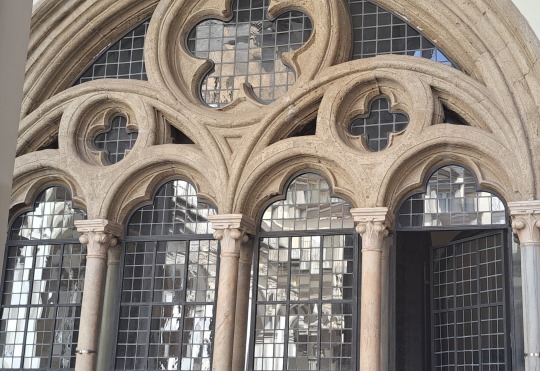
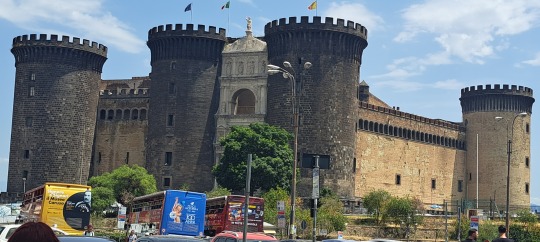
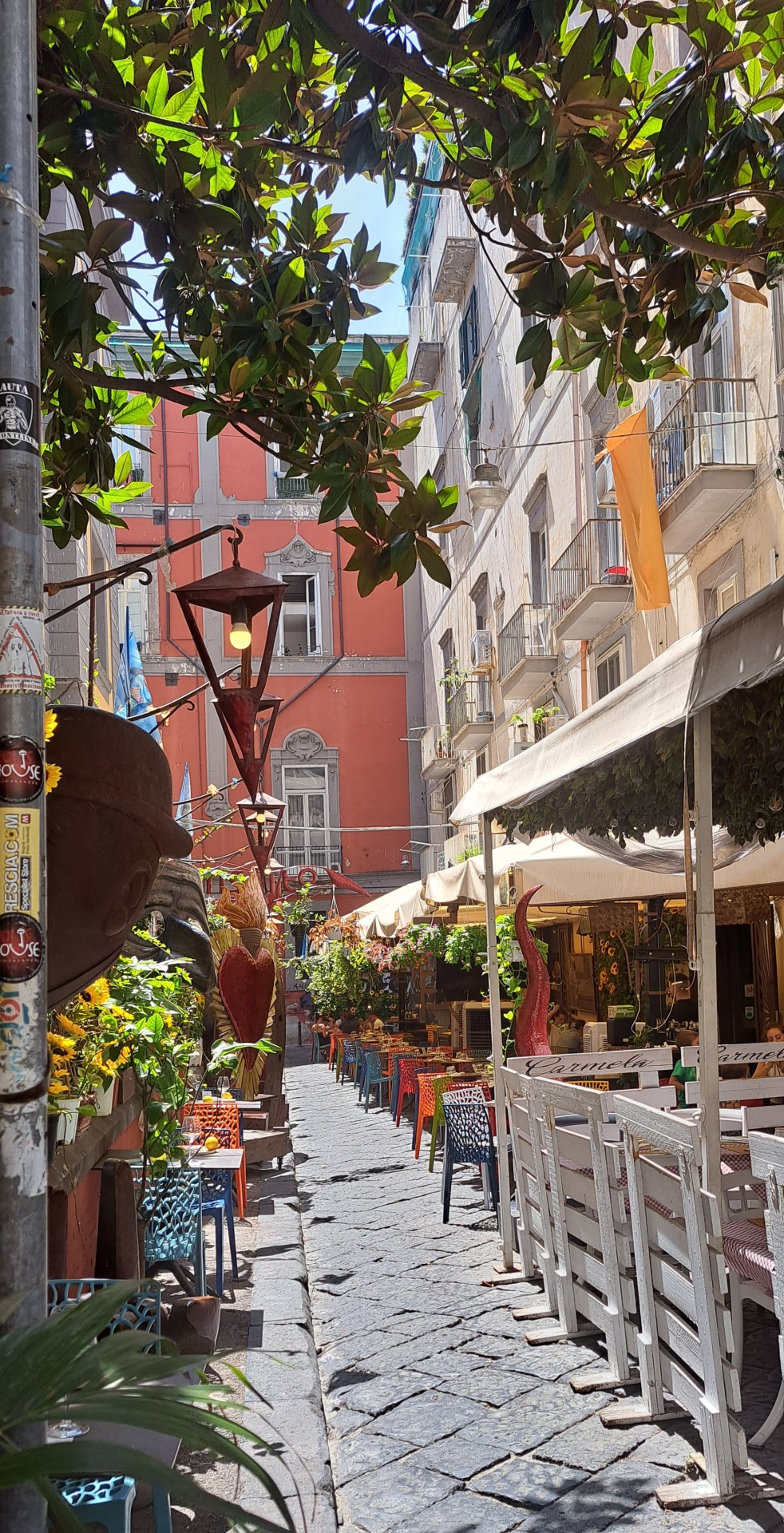

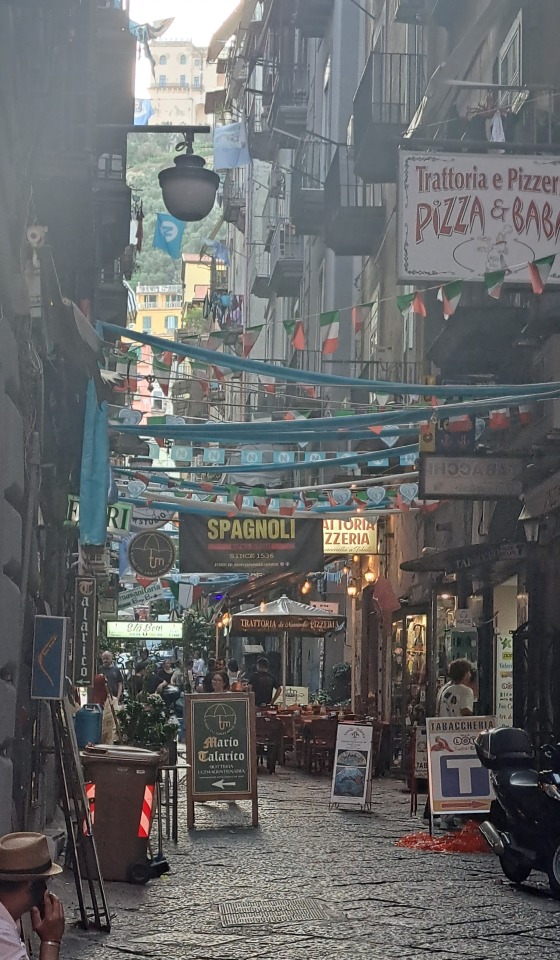
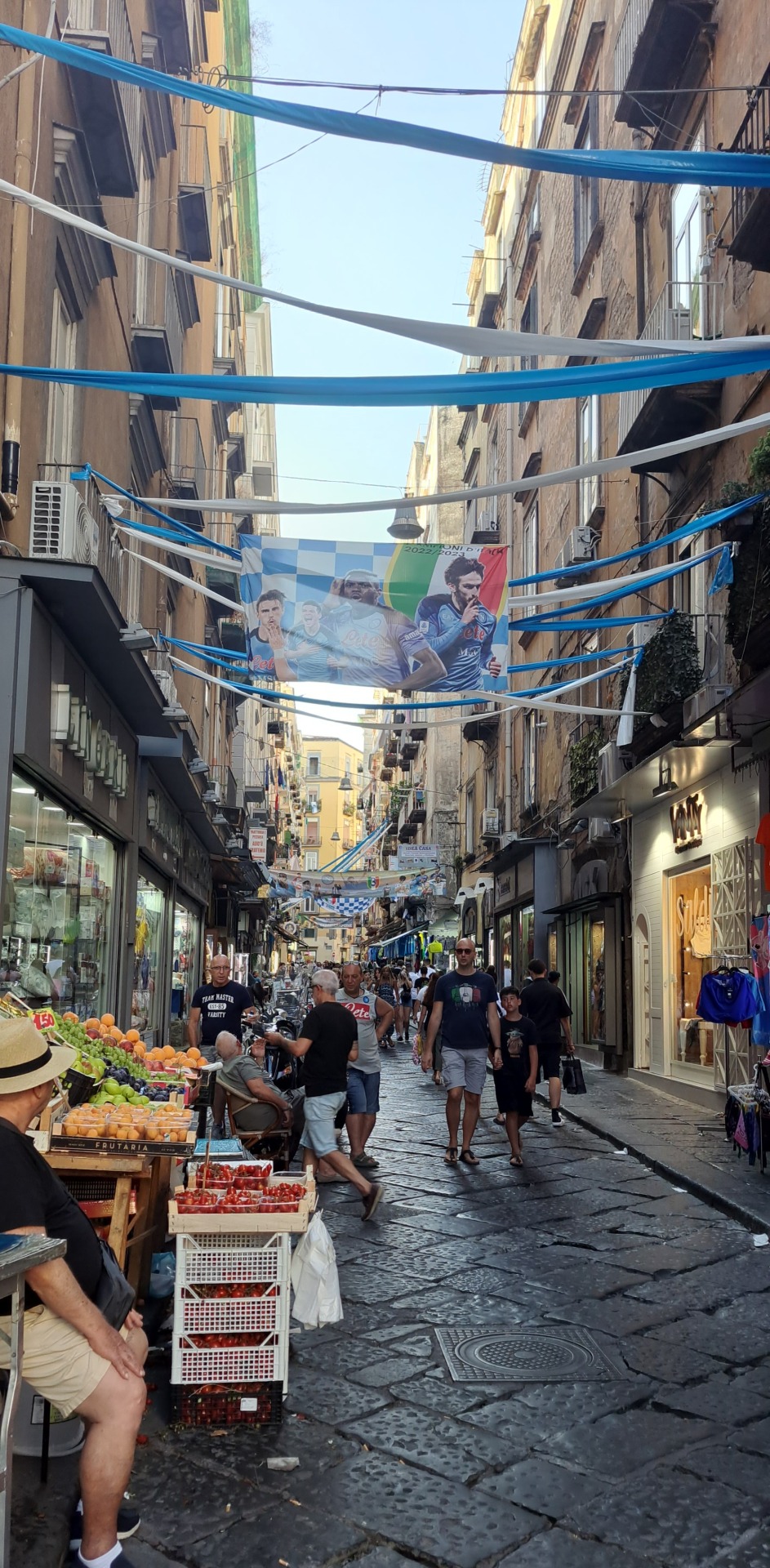
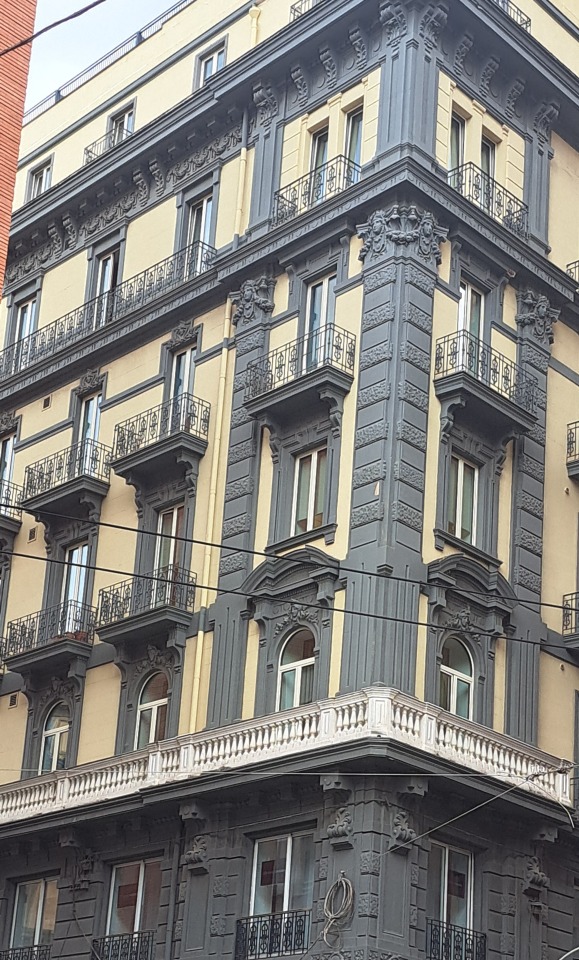



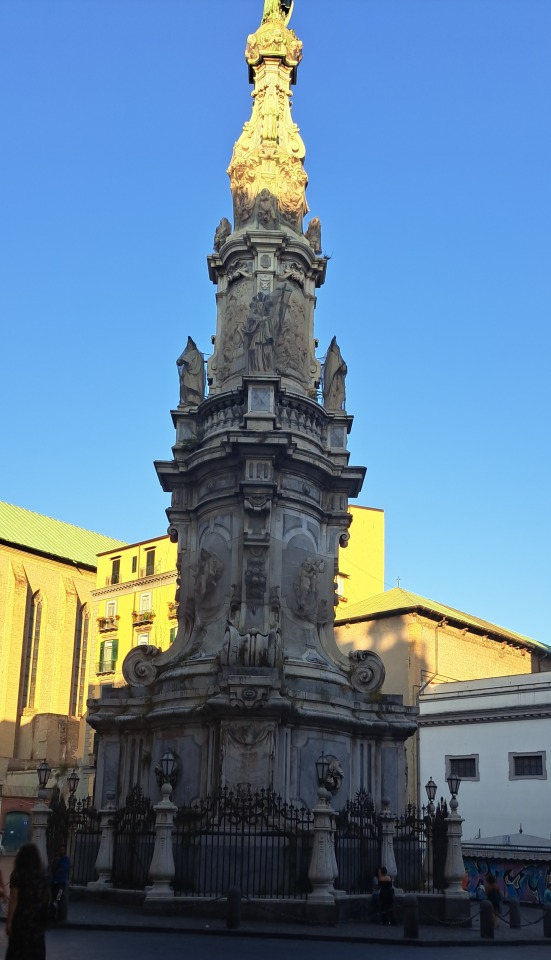
Lekker afval!! Vars gehang in 'n waterstort met foto's van die disse wat jy kan bestel daarvan.
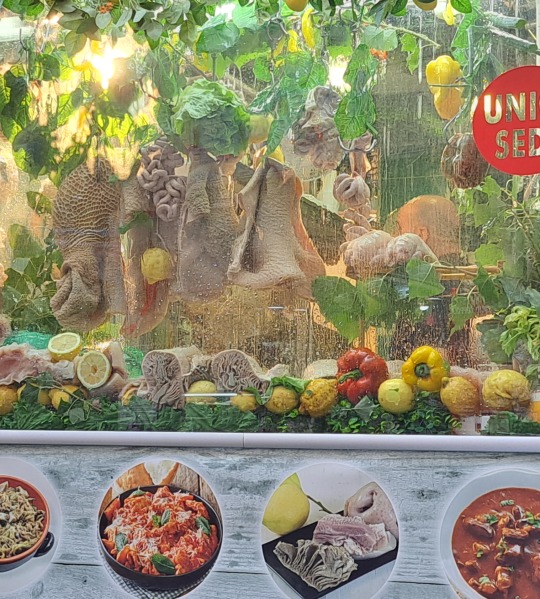
Hamme vir die pizza
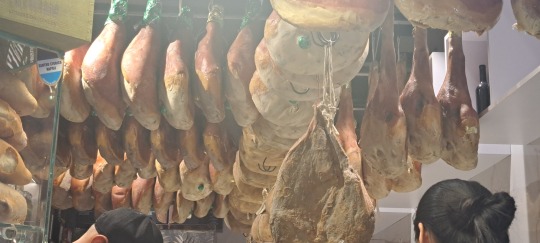
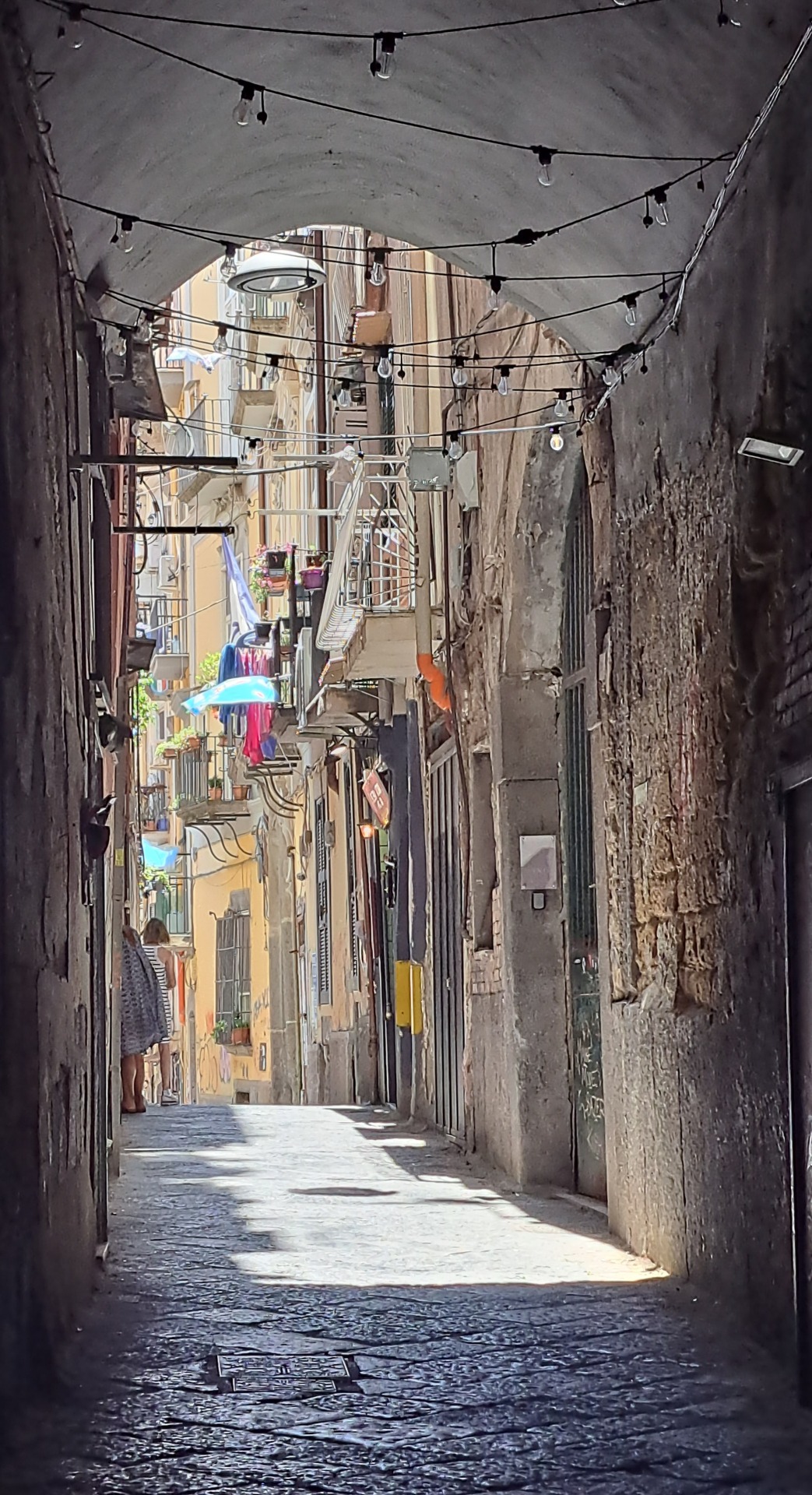
'n Ongelooflike winkelsentrum.
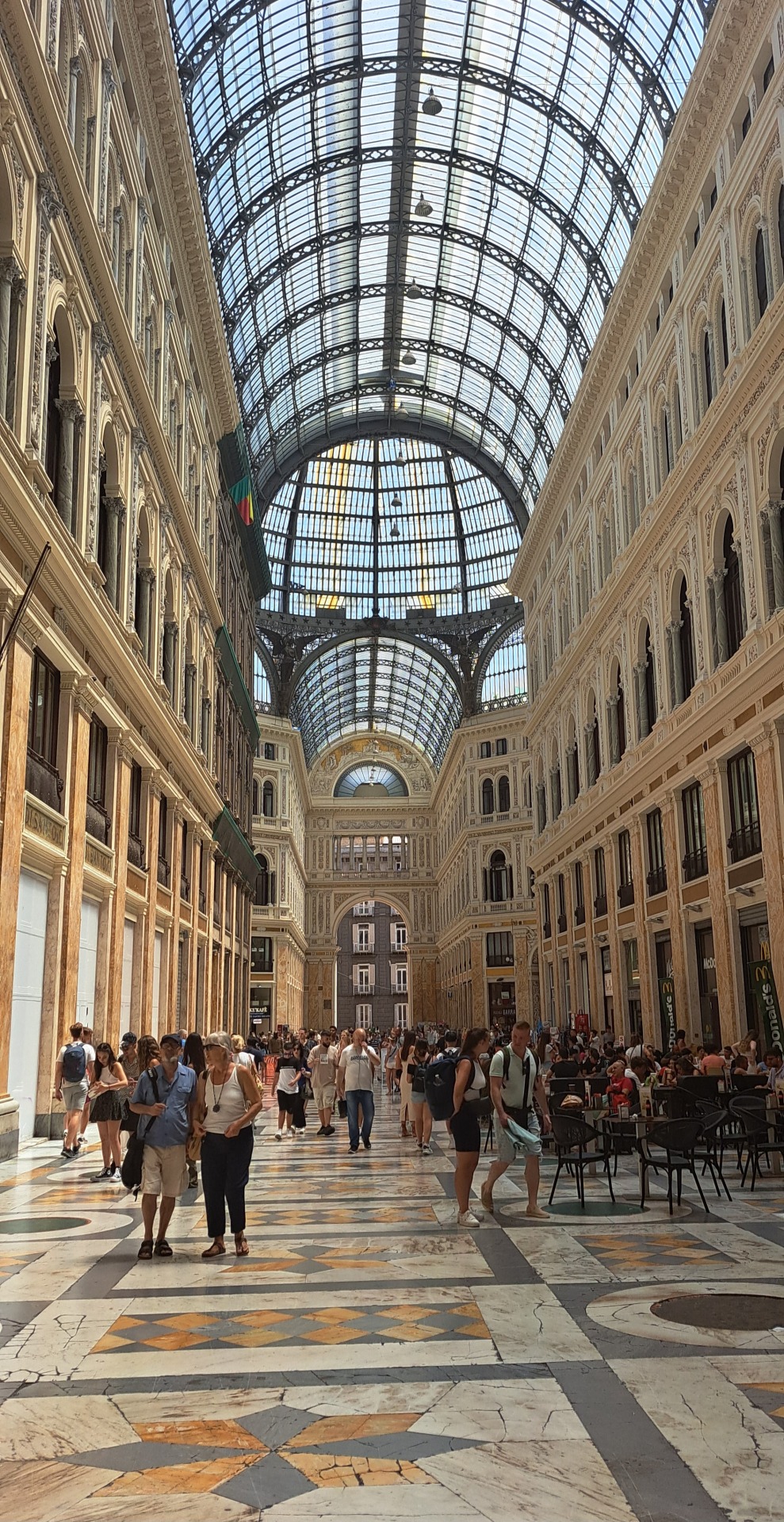
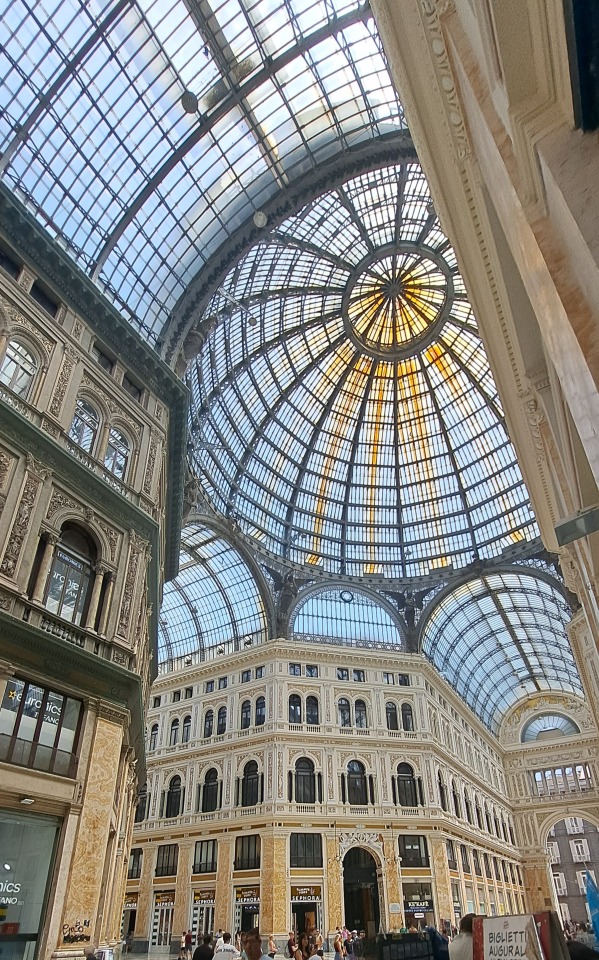

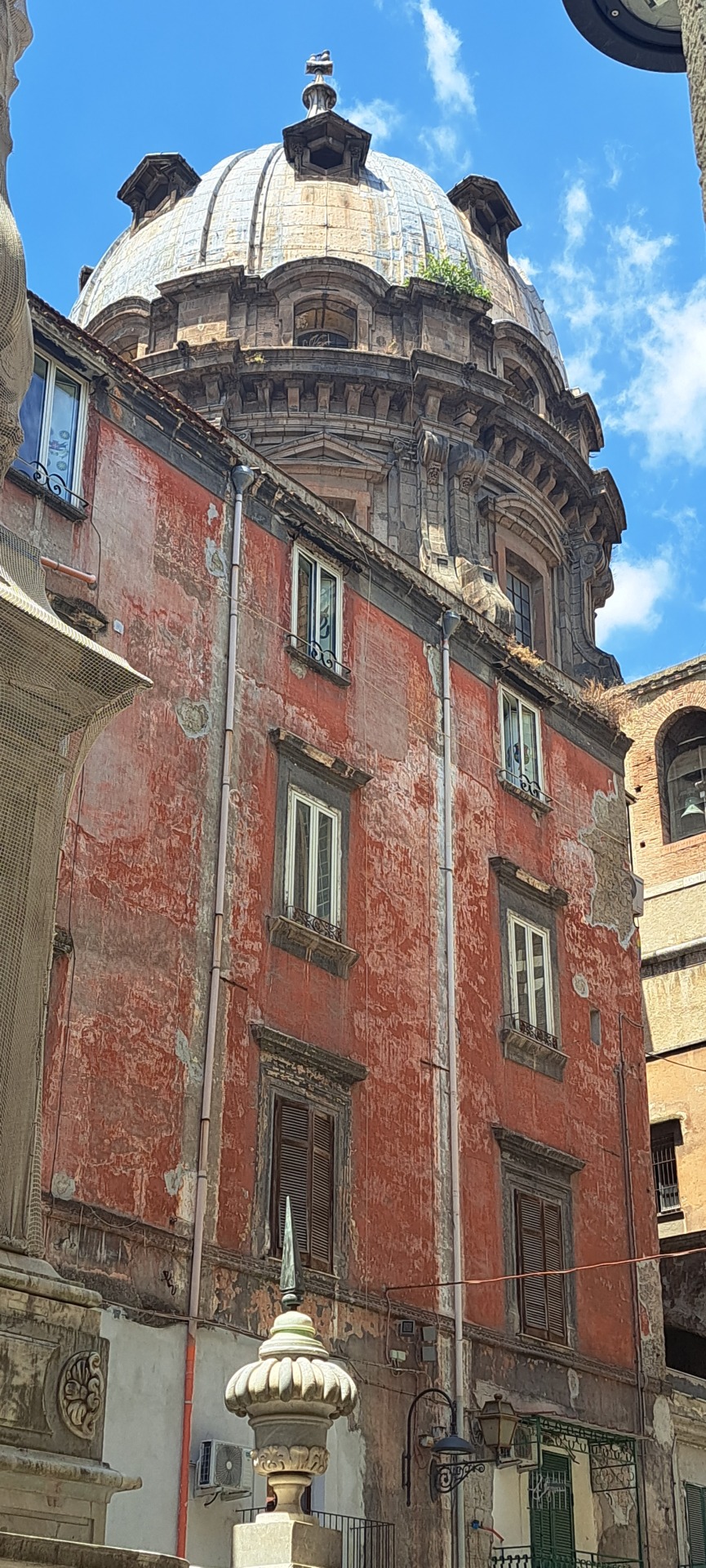

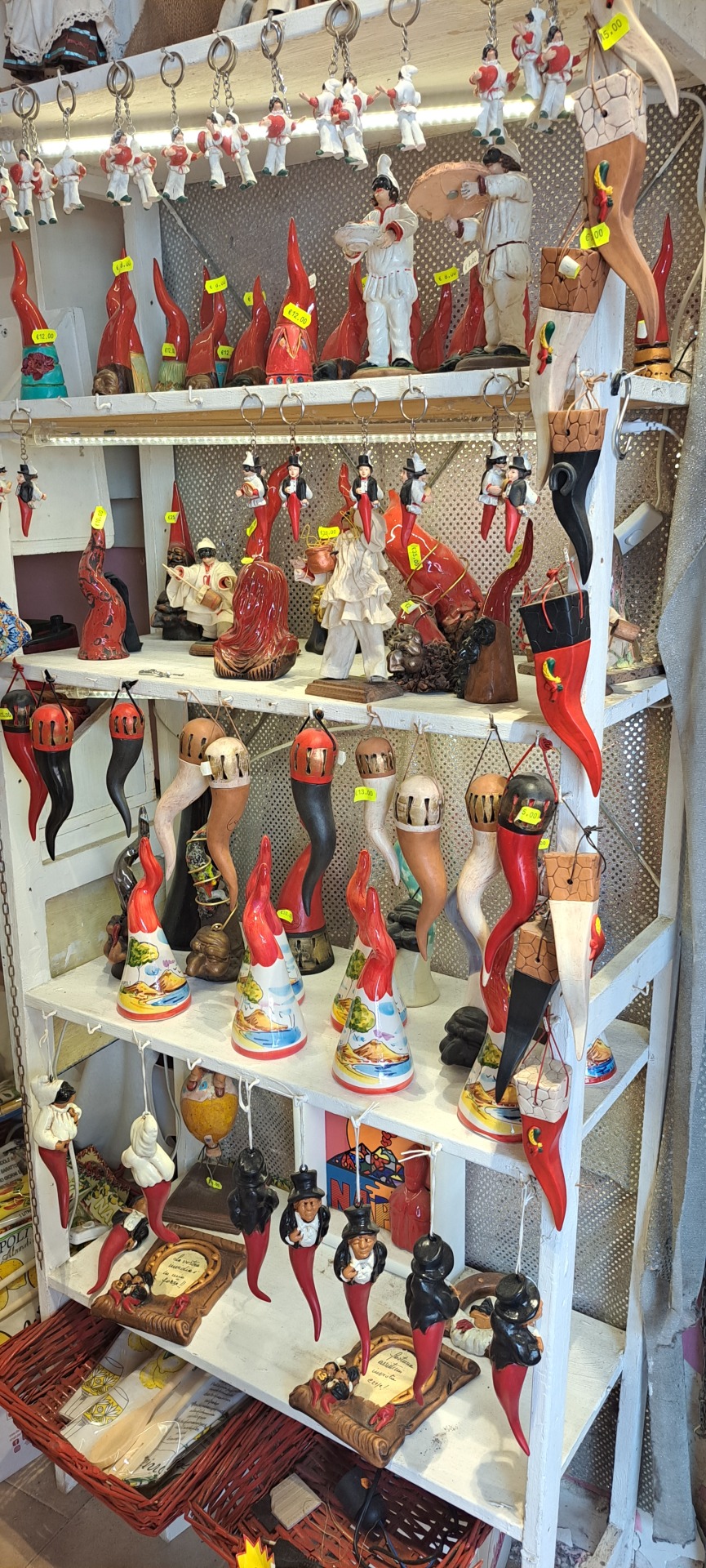
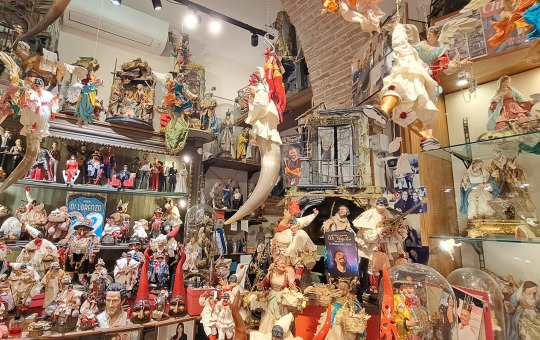
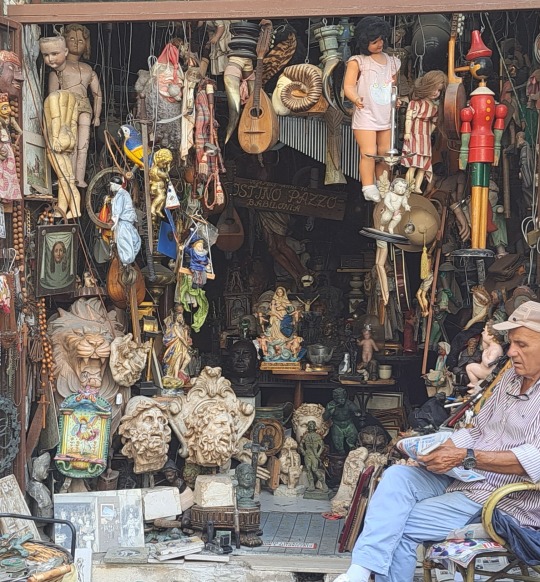
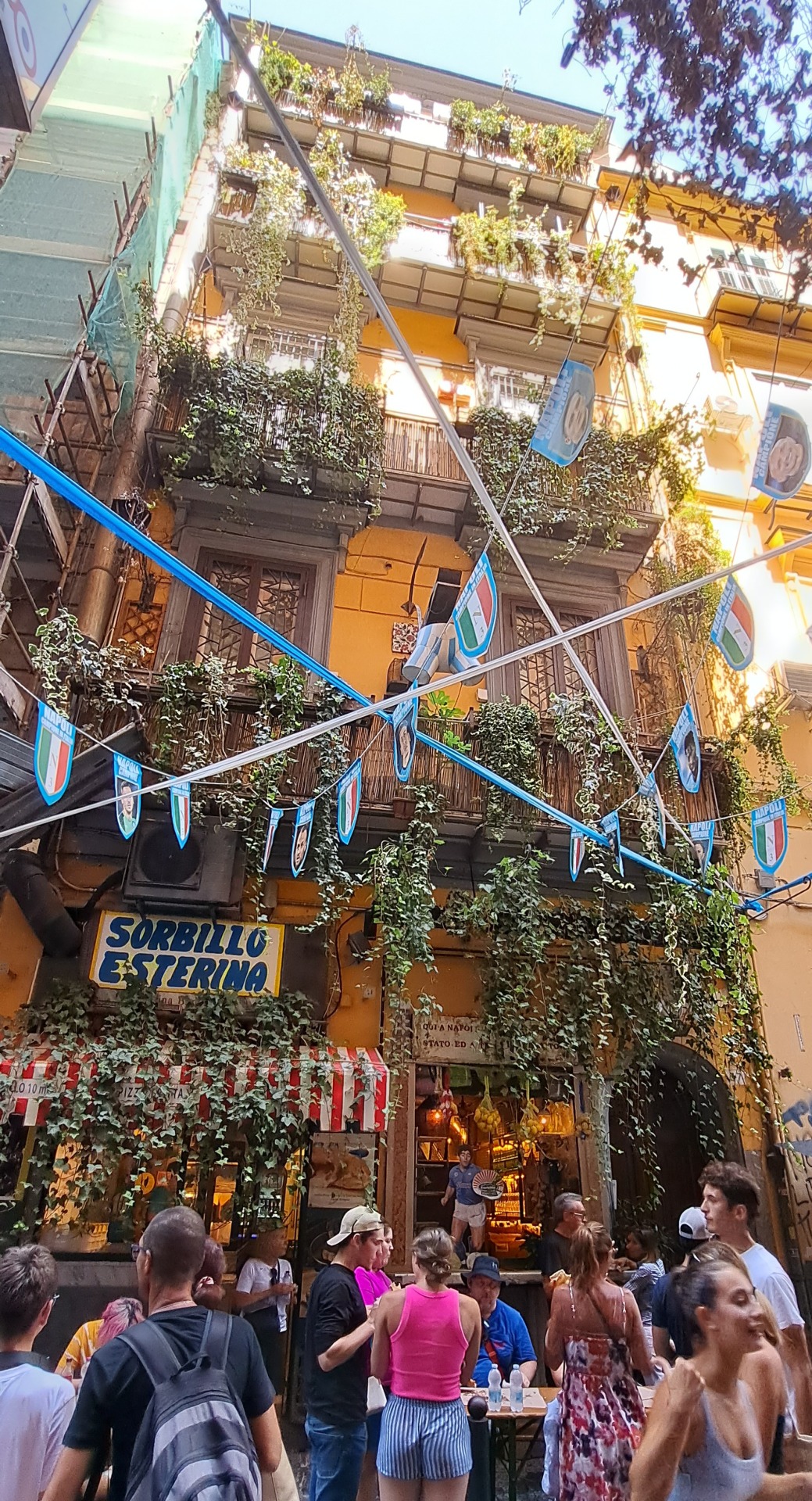

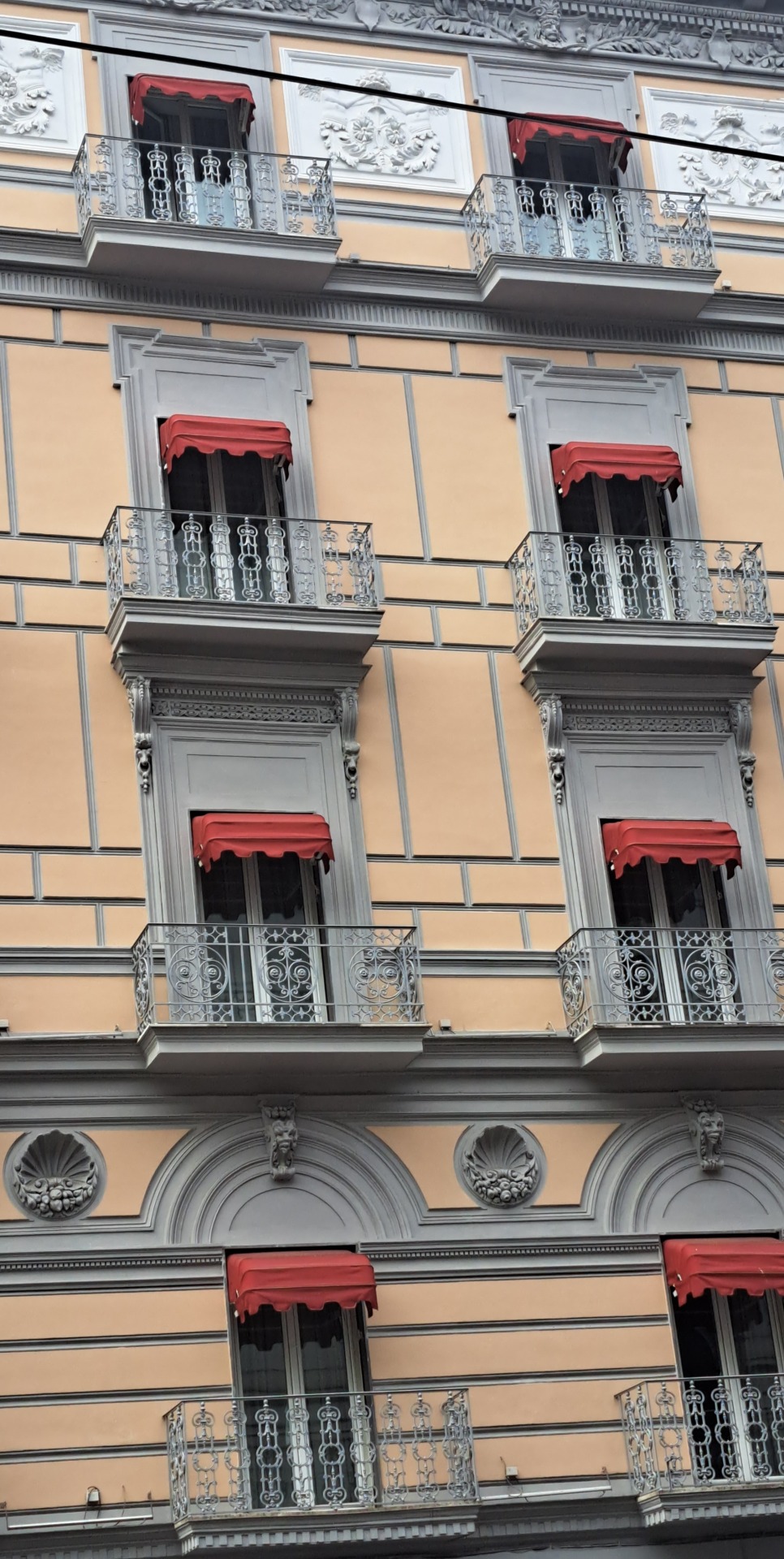
2 notes
·
View notes
Text
Bertrand charms English visitor on Elba
Count Bertrand was lodged in the Hotel de Ville, which is situated in the Piazza, or square of the town; but in apartments of a most miserable, barrack-like description. We ascended to the sitting-room by three unconnected flights of stone steps; the furniture consisted of about half a dozen chairs, a couple of tables, and a mattress laid on chairs, by way of sofa, for the accommodation of Madame Bertrand--the floor was of brick, the walls were bare, and the windows were without curtains. The dining apartment was very small, and the furniture pretty much of the same description as that in the sitting-room.
Nothing could exceed the kindness and attention which we experienced from the Count and Countess, during our stay on the Island ; which, owing to contrary winds and other causes, was protracted much beyond what we anticipated. At his residence we found a welcome at all hours ; he furnished us with books; presented us with tickets for the balls given at the theatre; procured for us an introduction to Napoleon, his mother, and sister, and in short, did all in his power to render our stay agreeable. It was quite delightful to see him with his children: the eldest, called Napoleon, was born a few days before the battle of Wagram; the second was a remarkably fine little girl. Count Bertrand has made the greatest sacrifices in order to follow the fortunes of his master, and has indeed proved himself a faithful and firmly attached friend ... Madame Bertrand is a fine woman, of pleasing manners ; she is connected with the Irish family of Dillon, and our conversation with her was carried on both in French and English ; the two languages being frequently used in the same sentence. She was very minute in her enquiries respecting the Empress Maria Louisa and the young Prince, whom we had seen at Vienna.--The Count understood English sufficiently to read it, and apprehend the meaning of a person speaking it, though unable to converse in it himself.
Minutes of a conversation with Napolen Bonaparte, during his residence at Elba, in January 1815 by John Henry Vivian, 1839. (Link)
Thanks to @shannonselin’s blog for bringing this to my attention.
#elba#english memoirs#Bertrand still went to St. Helena after this crappy housing situation on Elba#hathitrust
8 notes
·
View notes
Text
Encomi ai Carabinieri. Lotta alla criminalità
LUCCA In un’affollata piazza Napoleone, l’Arma dei Carabinieri ha celebrato ieri il 210° Anniversario della Fondazione. La cerimonia si è svolta alla presenza di numerose Autorità militari, civili e religiose con schierati, come da tradizione, i plotoni di rappresentanza e mezzi militari che hanno reso gli onori al Prefetto della Provincia di Lucca, Giusi Scaduto,…
Encomi ai Carabinieri. Lotta…
youtube
View On WordPress
0 notes
Text

Il nostro spettacolo teatrale è "ISOLE".
So che si mescolano mitologia greca, Napoleone, i cantieri edili antichi, i pirati, folklore, la Santeria cubana, coreografie tropicali e balli di gruppo.
Lo spettacolo è il 18 Maggio, al teatro "Le dame inglesi" di Merate.
Una possibile replica sarà il 29 Giugno, ma in piazza di Osnago.
0 notes
Text
Lucca, la quinta tappa del 'Corecom Tour'

Lucca, la quinta tappa del 'Corecom Tour'
Quinta tappa per il 'Corecom Tour', la campagna di informazione e comunicazione che il Comitato toscano per le comunicazioni, guidato da Marco Meacci, in collaborazione con l'Unione Province Italiane, ha deciso di intraprendere per spiegare diritti e prerogative dei cittadini nel variegato mondo delle telecomunicazioni.
Dopo le prime quattro tappe a Prato, Pistoia, Livorno e Grosseto sarà la volta di Lucca: l'appuntamento è per mercoledì 7 febbraio alle 11 nella sala Antica Armeria di palazzo Ducale (sede della provincia di Lucca), in piazza Napoleone.
Con il presidente Meacci intervengono le componenti del Comitato Carlotta Agostini e Bianca Maria Giocoli e il presidente della Provincia di Lucca Luca Menesini....
#notizie #news #breakingnews #cronaca #politica #eventi #sport #moda
Read the full article
0 notes
Text
Duran Duran in concerto al Lucca Summer
Duran Duran ospiti del Lucca Summer
festival. Il 21 luglio prossimo la celebre band inglese torna,
dopo 12 anni, sul palco di piazza Napoleone “per quella che si
preannuncia già come una delle serate di punta del festival”
spiegano gli organizzatori.
Inseriti nella Rock and Roll Hall of Fame nel 2022, i Duran
Duran hanno venduto oltre 100 milioni di album in tutto il
mondo, oltre ad aver…
View On WordPress
0 notes
Text
The Smashing Pumpkins + Tom Morello: in concerto al Lucca Summer Festival 2024
THE SMASHING PUMPKINS approdano al Lucca Summer Festival.Prima di loro, sul palco di Piazza Napoleone, la leggendaria chitarra di Tom Morello come speciale guest.
Biglietti in vendita da venerdì 1° dicembre su Ticketone
Torna in Italia una delle band più iconiche e anticonformiste della storia di tutti i tempi. Gli SMASHING PUMPKINS approdano sul palco di Piazza Napoleone per un evento…

View On WordPress
1 note
·
View note
Text
Nuovo post su Atom Heart Magazine
Nuovo post pubblicato su https://www.atomheartmagazine.com/smashing-pumpkins-concerto-italia-biglietti-lucca-summer-festival/
Gli Smashing Pumpkins Tornano in Italia con Tom Morello: Un Concerto Evento al Lucca Summer Festival
Il Lucca Summer Festival ha annunciato un evento imperdibile per gli amanti del rock: il 6 luglio 2024, gli Smashing Pumpkins, guidati da Billy Corgan, porteranno il loro “The World Is a Vampire Tour 2024″ a Piazza Napoleone. A rendere il concerto ancora più straordinario, lo special guest Tom Morello, celebre chitarrista di Rage Against The Machine ed Audioslave, si esibirà in apertura.
Smashing Pumpkins in concerto in Italia – I biglietti
L’organizzazione ha confermato che quella del 6 luglio 2024 a Piazza Napoleone sarà l’unica data italiana degli Smashing Pumpkins, rendendo il concerto un’occasione unica per i fan italiani. L’ultima data della band nel nostro paese risale a ormai 5 anni fa al Firenze Rocks. Insomma, se avete intenzione di andare a vederli, non potete perdervi i biglietti e conviene acquistarli all’apertura delle vendite.
Gli organizzatori hanno annunciato che i biglietti per il concerto degli Smashing Pumpkins saranno disponibili all’acquisto a partire dal 1 dicembre 2023. Potrete trovarli sul sito ufficiale del Lucca Summer Festival e sul circuito di TicketOne.
TicketOne
Consigliamo di salvare QUESTO LINK tra i preferiti ed entrarci l’1 dicembre già qualche minuto prima delle 11.00. In modo da riuscire ad entrare subito in fila al momento dell’apertura delle vendite per la data degli Smashing Pumpkins al Lucca Summer Festival.
The World Is a Vampire Tour 2024
Il “The World Is a Vampire Tour 2024” promette di offrire uno spettacolo memorabile. Il tutto, arricchito dalla presenza di Tom Morello che si esibirà in apertura, prima dell’che Billy Corgan e compagni salgano sul palco.
Gli Smashing Pumpkins, celebri per i loro successi intramontabili, ad oggi hanno venduto oltre 30 milioni di album nel mondo. Il 6 luglio 2024 sono pronti a regalare al pubblico italiano un’esperienza indimenticabile, trasformando Piazza Napoleone in un palcoscenico di pura energia rock.
Cerca altri Concerti ed Eventi.
0 notes
Text
Livia Raimondi, storia di un'amante.
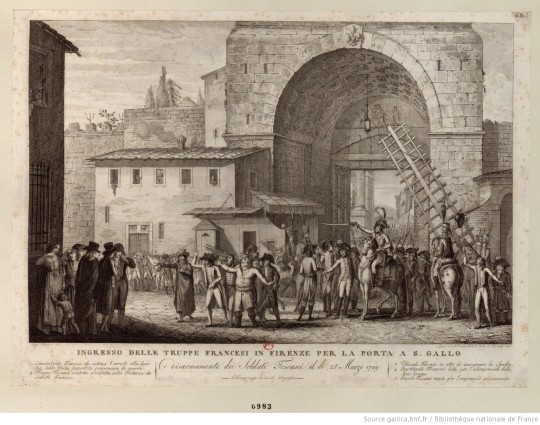

Ingresso delle truppe francesi in Firenze
Era il 27 marzo 1799 quando i francesi entrarono a Firenze, passando attraverso quell’arco trionfale, che era stato eretto sessanta anni prima per la venuta dei Lorena, in piazza di Porta San Gallo, l’attuale piazza della Libertà. Recavano un ramoscello di ulivo nelle baionette perché era il giorno di Pasqua e perché si presentarono come “portatori di pace” . Il granduca di Toscana Ferdinando III di Lorena, che si trovava nel palazzo della Meridiana a Palazzo Pitti, fu invitato a lasciare la città ed in Firenze si stanziarono i “Nuvoloni”, termine con cui i fiorentini chiamarono i francesi dal “Nous voulons “ dei loro manifesti ufficiali. Dopo la parentesi del Regno d’Etruria, durato dal 1801 al 1807, la Toscana dal 1808 era stata formalmente annessa alla Francia e divisa nei tre dipartimenti dell’Arno, di cui Firenze fece parte, dell’ Ombrone e del Mediterraneo. Napoleone conferì il “governo generale del dipartimento della Toscana” alla sorella Elisa con il titolo di granduchessa e la giunta straordinaria di Toscana, presieduta dal generale Jean Francois, barone di Menou, approvò la prima delibera istitutiva del censimento generale della popolazione dei tre dipartimenti per motivi fiscali, di circoscrizione militare e per l’eliminazione del maggiorascato ed altro.
Il Fallani, a seguito di questi considerevoli interventi, nel 1786 realizzò anche una nuova facciata in stile barocco fiorentino ed una nuova porta principale, contrassegnata, a patire dal 1810, dal n. 518 e che si apriva sull’allora piazza Imperiale, denominata in precedenza piazza del Granduca, ed oggi conosciuta come piazza della Signoria.
Livia risultava residente a Firenze da ben 22 anni, vale a dire dal 1788, anno in cui aveva dato alla luce un figlio, nato dall’unione con il granduca. Il bambino non avendo potuto né essere riconosciuto come figlio naturale di Pietro Leopoldo, in quanto concepito fuori dal vincolo matrimoniale e per giunta da un legame con una donna definita “di basse origini”, né potendo avere il cognome della madre, per non rendere ufficiale il legame, risultò alla nascita uno dei tanti figli dello Spedale degli Innocenti ed al quale, solo più tardi, sarà assegnato il nome di “Luigi von Grun”. L’ 8 gennaio del 1788 era nato anche Rodolfo Giovanni, il sedicesimo ed ultimo figlio che Pietro Leopoldo ebbe dalla moglie Maria Luisa di Borbone, figlia del re Carlo III di Spagna, con la quale si era unito in matrimonio ad Innsbruck nel 1765. La sorte di questi due figli del granduca sarà molto diversa: Rodolfo Giovanni sarà avviato alla carriera ecclesiastica, mentre Luigi von Grun a quella militare a Vienna.
Nel 1790 Pietro Leopoldo, in seguito alla morte del fratello, l’imperatore Giuseppe II, dovette succedergli al trono, col nome di Leopoldo II e per questo fu costretto ad abbandonare la Toscana.
L’ imperatore prima della sua morte aveva assicurato già a lei ed al figlio Luigi una rendita che avrebbe permesso loro di vivere...
Fine prima parte segue seconda parte il giorno lunedì 31/07/2017

Marta Questa
Read the full article
0 notes
Text
the issue with #41 live at piazza napoleone is that like. for the first 7 minutes you’re like. “awesome i love this song”. and then it keeps going and you’re like “oh yeah this is the live version”. and then at some point between 13-16 minutes into the song you’re like “oh. this is the live version.” and you have to make the decision to skip the last 5ish minutes or not
0 notes
Text
Sposi In 2023 a Stupinigi

Con Sposi In si potrà vivere un weekend tra idee, suggerimenti e proposte per vivere al meglio il giorno più bello e alla Palazzina di Caccia di Stupinigi tante sono le novità 2023/24 che i professionisti del matrimonio presenteranno per poter realizzare eventi sempre più unici.
Negli spazi espositivi allestiti all’interno delle Citroniere sabaude reali, aperte al pubblico per l’occasione,ci saranno brillanti idee per un matrimonio originale tra fotografia e video, abiti sposa, sposo e cerimonia, allestimenti floreali, musica, auto di lusso e d’epoca, partecipazioni e bomboniere, gioielli, location, catering, ristoranti, wedding planner, viaggi, beauty, wedding cake .
Sabato 23 settembre si potrà degustare la farinata ligure, con ingredienti genuini e maestria senza eguali, oltre ad essere un ottima soluzione per un aperitivo street food in qualunque location scelta per il matrimonio delle future coppie .
Inoltre il 24 settembre alle 15.30 e 16.30 ci sarà uno workshop e degustazione weddingcake firmati dalla Pasticceria dell'Agnese di Torino, per pensare al matrimonio cominciando dal momento più dolce.
Per i futuri sposi ci sarà anche un buono sconto del 10% del valore della eventuale torta nuziale che sceglieranno presso la pasticceria.
Nota anche come la Residenza Sabauda per la Caccia e le Feste ed edificata dal 1729 su progetto di Filippo Juvarra, la Palazzina di Caccia di Stupinigi è uno dei gioielli monumentali di Torino, a 10 km da Piazza Castello.
Riaperta al pubblico dopo importanti lavori di restauro, la Palazzina di Caccia ha piena dignità museale con i suoi arredi originali, i dipinti, i capolavori di ebanistica e il disegno del territorio.
La costruzione della Palazzina di Caccia iniziò nel 1729 su progetto di Filippo Juvarra, e continuò fino alla fine del XVIII secolo con interventi di ampliamento e completamento di Benedetto Alfieri e di altri architetti quali Giovanni Tommaso Prunotto, Ignazio Birago di Borgaro, Ludovico Bo, Ignazio Bertola.
Testimonianza eccezionale dello spirito del tardo Juvarra e di Benedetto Alfieri, fu il luogo per la caccia nella vita di corte sabauda, sontuosa e raffinata dimora prediletta dai Savoia per feste e matrimoni durante i secoli XVIII e XIX, nonché residenza prescelta da Napoleone nei primi anni dell’800.
Agli inizi del XX secolo fu scelta come residenza dalla Regina Margherita, e dal 1919 è la sede del Museo dell’Arredamento.
Read the full article
0 notes